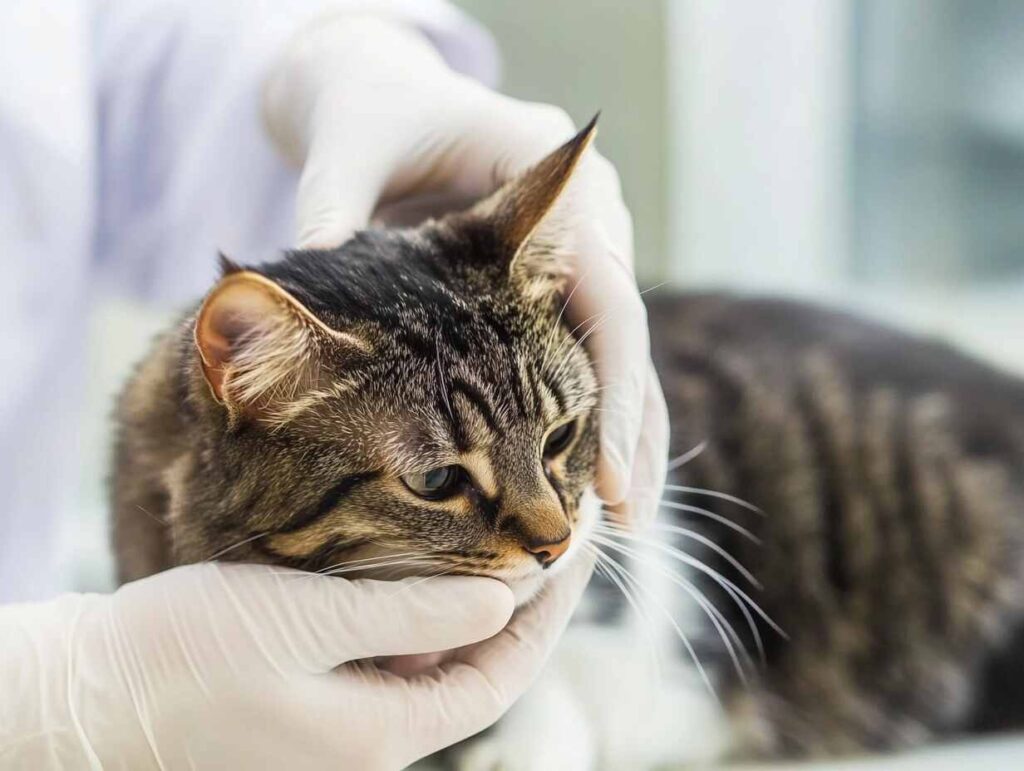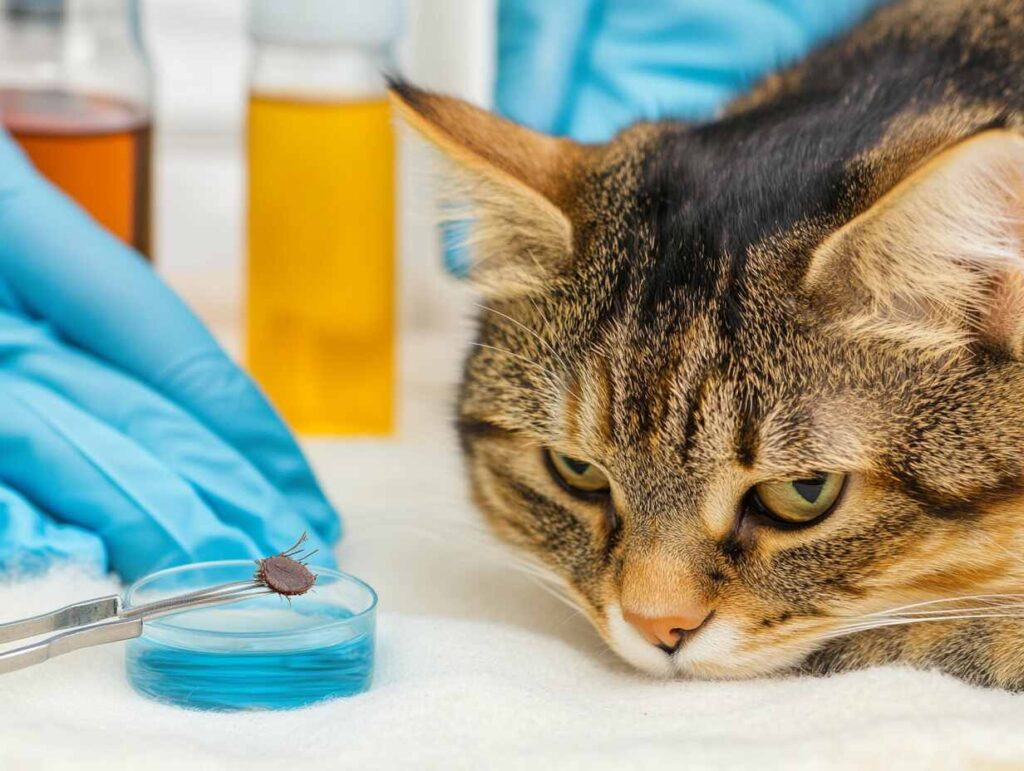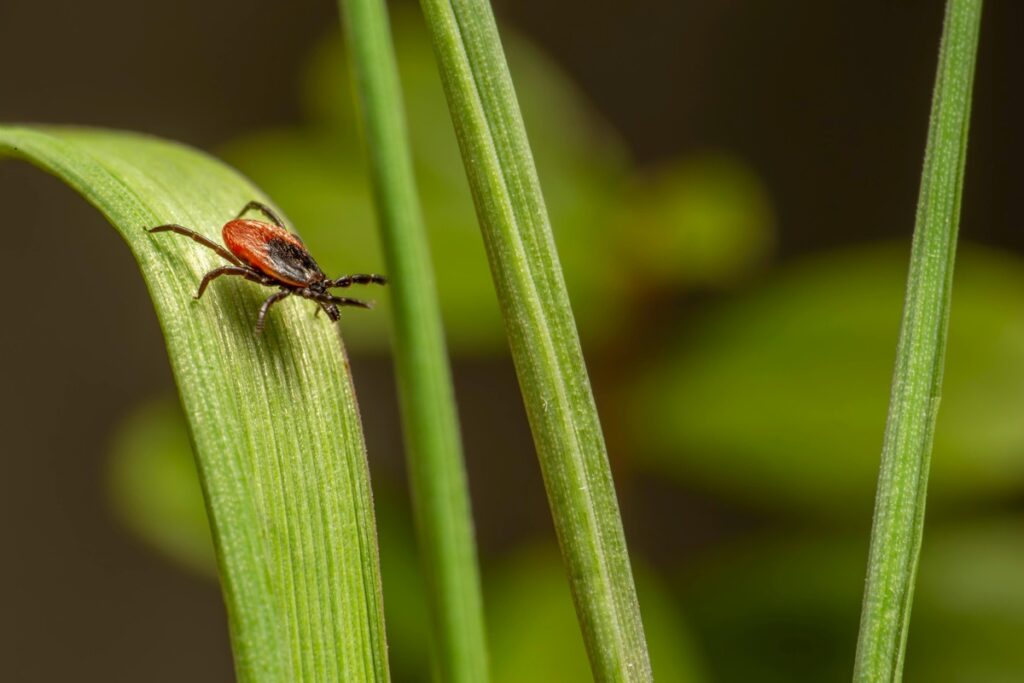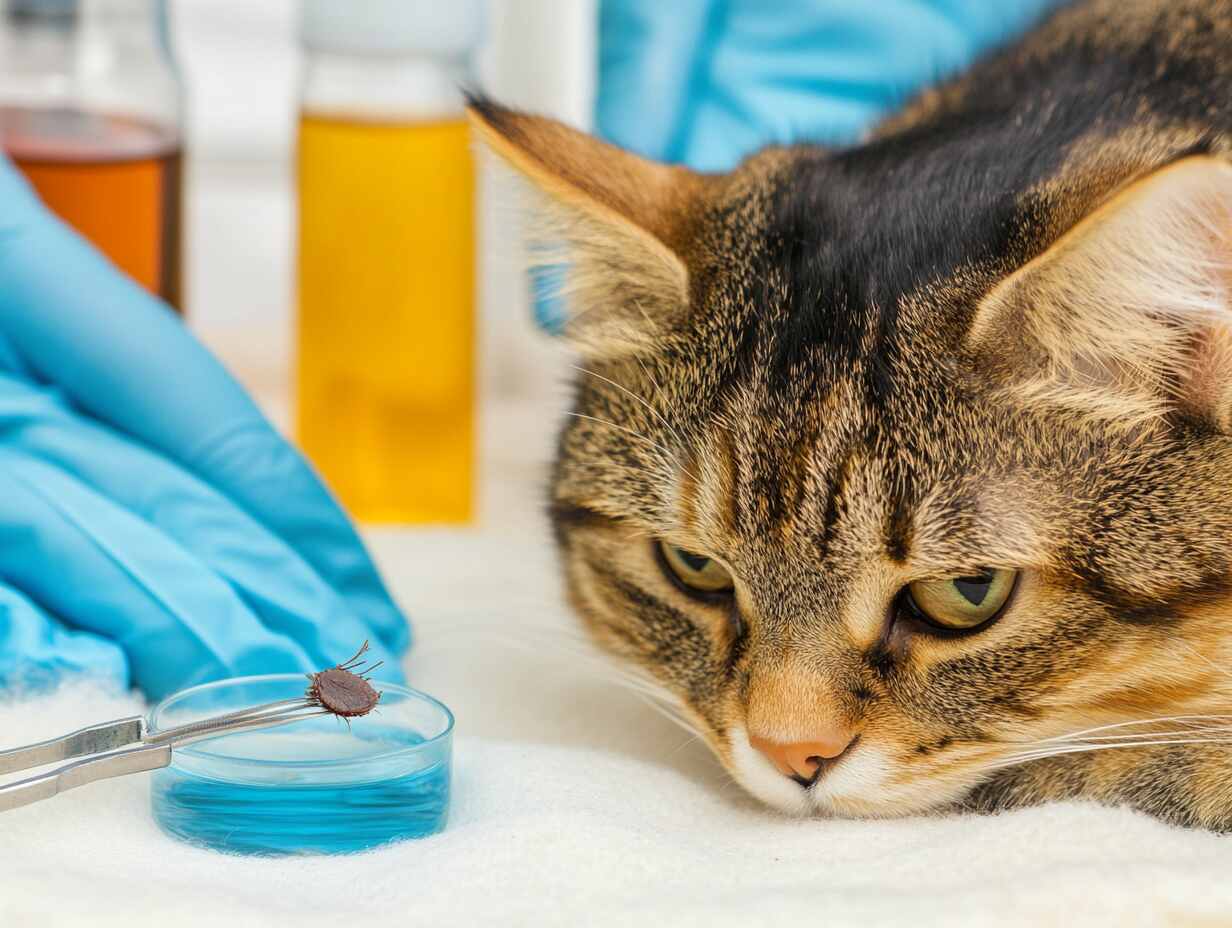Here Are 7 Things You Should Do Immediately If Your Cat Has Ticks
Ticks are more than just a nuisance for your cat—they can also carry serious diseases that affect both pets and humans. If you discover that your cat has ticks, it’s important to act quickly and carefully to remove them and ensure your feline friend’s health. Here’s a step-by-step guide on what to do if your cat has ticks, along with tips for prevention.
1. Stay Calm and Assess the Situation

First, don’t panic! It’s natural to feel concerned when you spot a tick on your cat, but remaining calm is key. Gently examine your cat’s fur to identify any ticks. Ticks are usually small, oval-shaped, and can range in color from brown to gray. They’re often found in warm, hidden areas like behind the ears, around the neck, under the armpits, and between the toes.
2. Gather the Necessary Tools

catsanddogs|midjourney
To safely remove a tick, you’ll need the right tools. Here’s what you should have on hand:
- Fine-tipped tweezers or a tick-removal tool (preferably designed for pets)
- Rubber gloves (to protect yourself from any possible disease transmission)
- Rubbing alcohol (to disinfect the bite area afterward)
- A container or plastic bag (to dispose of the tick)
3. Remove the Tick Safely

catsanddogs|midjourney
When removing a tick from your cat, it’s important to do so carefully to avoid squeezing or breaking the tick, which can increase the risk of infection. Follow these steps:
- Wear gloves to protect yourself from any potential diseases.
- Use the tweezers or tick removal tool to grip the tick as close to your cat’s skin as possible.
- Pull upward with steady, even pressure to remove the tick. Avoid twisting or jerking, as this can leave parts of the tick embedded in the skin.
- Place the tick in the container with rubbing alcohol to kill it.
- Check your cat’s skin for any remaining tick parts. If you can’t remove them, contact your vet.
4. Clean the Area

catsanddogs|midjourney
After removing the tick, clean the bite area with warm, soapy water or antiseptic to prevent infection. Applying a bit of antibiotic ointment can help protect the area from any possible bacteria.
5. Monitor for Symptoms

catsanddogs|midjourney
After tick removal, keep a close eye on your cat for any signs of illness. Common symptoms of tick-borne diseases in cats include:
- Fever
- Loss of appetite
- Lethargy or weakness
- Swelling or redness around the bite area
- Limping or joint pain
If your cat shows any of these signs, it’s crucial to contact your veterinarian immediately for proper diagnosis and treatment.
6. Dispose of the Tick Properly

Never squash or flush a tick down the toilet. To dispose of it safely, place the tick in a sealed bag or container with rubbing alcohol, then throw it in the trash. This ensures that the tick is dead and cannot harm anyone or any other pets.
7. Prevent Future Ticks

catsanddogs|midjourney
The best way to protect your cat from ticks is by taking preventative measures:
- Use a vet-approved tick prevention product like topical treatments, collars, or oral medications.
- Check your cat regularly for ticks, especially if they spend time outdoors.
- Maintain a tick-free yard by mowing the grass regularly, removing debris, and treating outdoor areas with safe pest control products.
- Keep your cat indoors or limit their time outdoors, especially in wooded or grassy areas where ticks are common.
Prompt Action is Key

catsanddogs|midjourney
While ticks are a common problem for many cats, prompt action can significantly reduce the risk of any serious health issues. By safely removing ticks, cleaning the bite area, and monitoring for symptoms, you can help ensure your cat stays healthy and happy. Be proactive with prevention to keep ticks at bay and keep your feline friend protected. If you’re ever in doubt or find multiple ticks, always consult with your veterinarian for guidance and care.







